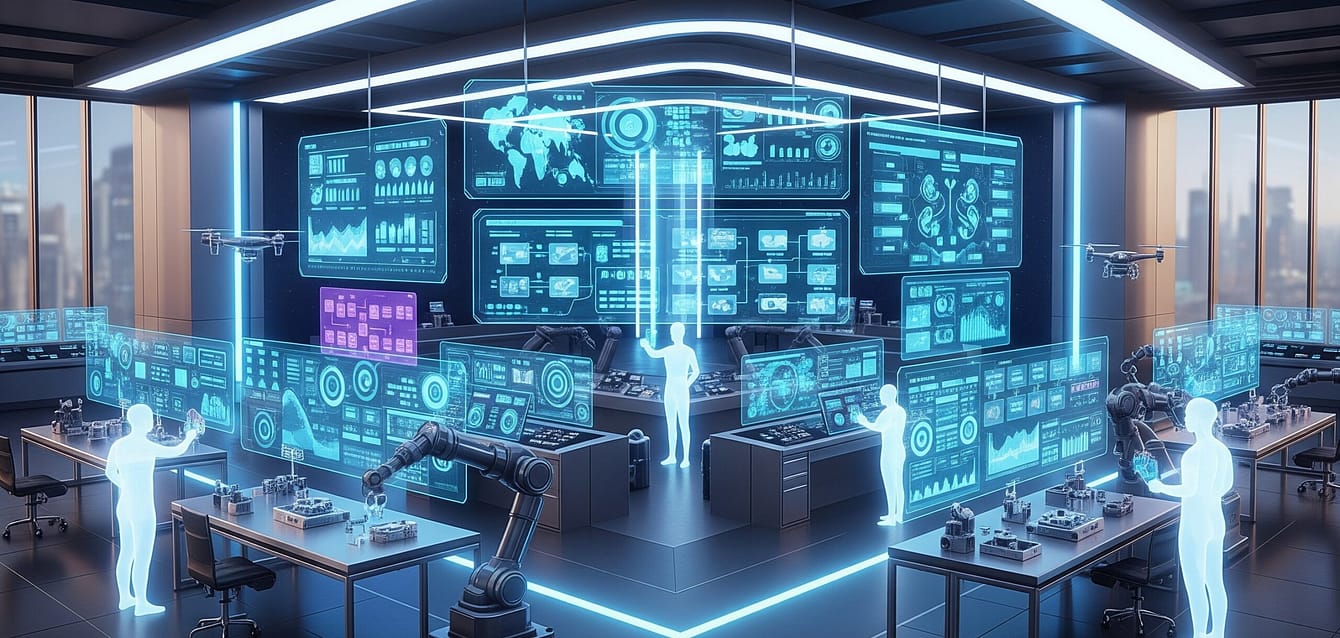The Agent Awakening
A year ago, most companies experimenting with AI were focused on single, isolated use cases: a chatbot on the website, a summarisation tool for meeting notes, maybe an automated report generator. In 2025, a new shift is underway the rise of AI agents.
Unlike traditional scripts or single-purpose models, AI agents are autonomous systems that can plan, decide, and act across multiple steps, often integrating with dozens of business tools in real time. They don’t just answer a question; they orchestrate entire workflows.
Task Automation to Goal Focus
The difference between a basic automation and an AI agent is like the difference between a calculator and a personal assistant.
AI agents understands the goal Ensure all invoices are processed on time and chooses the best sequence of steps, pulling data, sending reminders, and escalating exceptions without human prompting.
Automation executes exactly what you program If invoice received, then send to accounting.
Why 2025 Is the Breakout Year
Three factors are converging:
Improved orchestration frameworks — Open-source libraries like LangChain, LlamaIndex, and Haystack are giving developers a stable foundation to build and control agents without reinventing the wheel.
Cheaper computation and faster models — Running multi-step reasoning with large models is now cost-effective for mid-sized businesses, not just tech giants.
API-first software ecosystems — More business platforms expose APIs, making it easier for agents to plug in and act across systems.
Opportunities for Business Automation
AI agents are especially well-suited for:
- Customer Operations: handling tier-one inquiries, processing forms, and escalating complex cases.
- Sales & Marketing: researching leads, drafting outreach, and personalising campaigns at scale.
- Finance & Compliance: reconciling transactions, preparing audit-ready summaries, and flagging anomalies.
- Supply Chain: tracking orders, optimising delivery schedules, and managing vendor communications.
Early adopters report significant productivity gains — often reducing manual workload by 20–40% in targeted processes.
Risks and Guardrails
With autonomy comes risk. An AI agent given too much freedom could trigger unintended actions — sending the wrong email to hundreds of customers or updating incorrect records in a live database.
To deploy responsibly:
- Start with low-stakes tasks and clear boundaries.
- Sandbox external actions so the agent can simulate before committing changes.
- Keep a human-in-the-loop for decisions with legal, financial, or reputational impact.
- Log every action for audit and troubleshooting.
Regulators are also watching closely. In some industries, an AI agent acting without human review could breach compliance rules, even if the output is correct. Organizations are moving from task automation to goal-oriented execution by adopting intelligent workflows. As McKinsey notes, automation is no longer just about efficiency it’s about strategic impact.
Final Thought
The most effective rise of AI agents in 2025 won’t replace people they’ll amplify them. Think of them as tireless junior colleagues who prepare the groundwork, so humans can focus on strategy, judgment, and relationship-building.
Businesses that treat AI agents as part of a hybrid workforce — blending autonomy with oversight — will see faster, more reliable automation gains than those chasing full autonomy from day one.






